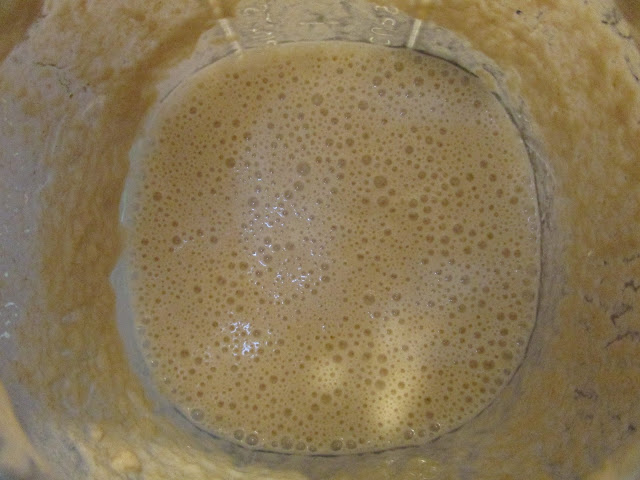The Science Notebook
Tuesday, July 3, 2018
I've Moved! New Website Domain
Hello everyone! I've moved The Science Notebook over to a wordpress site. Find all my new posts here: thesciencenotebookblog.wordpress.com.
Saturday, June 24, 2017
Sleep and Memory Part Three
This
is the third post in my series on sleep and memory. Check out the first and
second posts in the series for an introduction to the four stages of sleep and the
connection between Rapid Eye Movement sleep and memory.
Disrupting REM sleep also made it hard for research participants to remember stories, which requires complex declarative memory—that is, memory of narratives or complicated facts that can be declared or told. In contrast, the same subjects could easily remember simple facts, which requires simple declarative memory—that is, memory of straight-forward facts that can be stated. This indicates that REM sleep is only involved in complex declarative memory, and that simple declarative memory must be maintained differently, probably during SWS. [2]
But, if something impactful happened in the course of the day like getting mugged, or giving birth; the emotional aspects of these memories are likely processed during dreaming sleep. Have you ever gone to bed upset and woken up considerably more cheerful? Your emotions likely sorted themselves out during REM sleep. The fact that elements from significant emotional events show up in dreams could be related to the emotional processing occurring
Sleep is crucial for
preserving memories in general, but there are different types of memories and
different phases of sleep. Which phases of sleep benefit which types of
memories?
 |
| A young velocipedist on Michaux velocipede, a predecessor to the modern bicycle. Learning to ride this contraption required procedural memory. . A public domain image. Source. |
Procedural memory, memory
of how to do things, like how to ride a bike, has long been suspected to rely
on REM sleep for long-term retention. Here’s some evidence for this hypothesis:
Sleep disruption studies found that lack of REM sleep in study subjects made it
hard for them to perform tasks they just learned. Research on mice revealed
that REM sleep improved the mice’s motor skills, and this improvement caused
visible changes in mouse neurons.[1]
Other researchers thought
Slow Wave Sleep (SWS) also called deep sleep, or N2, another non-REM sleep
stage, were more important for procedural memory. More research is needed to
clear up these conflicting ideas.
 |
| Photo by blog author. Remembering tales from The Freddie Stories by Lynda Barry requires complex declarative memory. |
Disrupting REM sleep also made it hard for research participants to remember stories, which requires complex declarative memory—that is, memory of narratives or complicated facts that can be declared or told. In contrast, the same subjects could easily remember simple facts, which requires simple declarative memory—that is, memory of straight-forward facts that can be stated. This indicates that REM sleep is only involved in complex declarative memory, and that simple declarative memory must be maintained differently, probably during SWS. [2]
 |
| Blog author on beach. I need episodic memory to remember my trip through New England last summer! |
Though REM sleep likely
helps us remember stories, it may not help us remember the stories of our own
lives. Episodic memory, or memory of autobiographical events, needs two
sections of the brain to form and solidify—the hippocampus, and the lateral
prefrontal cortex. Brain activity in the lateral prefrontal cortex decreases
during REM sleep, which means our dreams probably don’t help us remember what
we did the day before.
 |
| The prefrontal cortex is shown in red. A creative commons image. Source. |
 |
| A creative commons image. Source. |
Instead, episodic memory
retention is suspected to rely on SWS. During SWS, connectivity between the
lateral prefrontal cortex and the hippocampus increases, possibly allowing
episodic memories to become permanent.
The connection between the
hippocampus and the lateral prefrontal cortex, suspected in retaining episodic
memories, is highest during the transition between sleep stages. Thus, the
beneficial effects of SWS may only work if this sleep stage proceeds REM sleep.
[3]
 |
| Sixteen faces expressing human emotions. Coloured engraving by J. Pass, 1821, after C. Le Brun. A creative commons image. Source. |
But, if something impactful happened in the course of the day like getting mugged, or giving birth; the emotional aspects of these memories are likely processed during dreaming sleep. Have you ever gone to bed upset and woken up considerably more cheerful? Your emotions likely sorted themselves out during REM sleep. The fact that elements from significant emotional events show up in dreams could be related to the emotional processing occurring
The absurd nature of
dreaming may not just be an entertaining side effect of emotional processing.
Dreams may help the brain pick up on non-obvious patterns for future use.[4]
This idea brings us back to Otto Pöetzl’s study I wrote about in the first post
in this series. To summarize, Pöetzl found that his study subject’s dreams
contained elements of a landscape painting they were briefly shown the day
before, even parts of the painting they didn’t remember right after seeing it.
It’s possible that patterns our brains unconsciously analyze come to light and
are related to the conscious brain during dreaming. More research is needed on
this topic before we really know how this works.[5]
Overall, most sleep
researchers agree that REM sleep is involved in more abstract and generic
memory processing while non-REM sleep works with specific memory functions like
simple declarative memory and episodic memory.
During a normal night’s
sleep we go through all sleep phases, not isolated chunks of just REM sleep or
just SWS like research subjects do during laboratory studies. Most likely all
sleep stages combined are needed to properly process and maintain memories.
Researchers are now examining how the transitions between sleep stages relate
to memory. Even from the preliminary research that’s already been conducted, it
is clear that humans spend one-third of our lives asleep for a reason.
 |
| The Sleeping Gypsy by Henri Rousseau. Photo taken by blog author at the MoMA. |
[1] Li, Ma,
Yang, and W. B. Gan. “REM sleep selectively prunes and maintains new synapses
in development and learning.” Nature Neuroscience, vol. 20, Jan. 2017, pp. 427-437. doi: 10.1038/nn.4479.
[2] Ackermann, and B. Rasch. “Differential
Effects of Non-REM and REM Sleep on Memory Consolidation?” Current Neurology and Neuroscience Reports, vol. 14, 7 Jan. 2014. SpringerLink, doi: 10.1007/s11910-013-0430-8.
[3] Spoormaker, Czisch, and
F.Holsboer. “REM Sleep, Hippocampus, and Memory Processing: Insights from
Functional Neuroimaging Studies.” Behavioral and Brain Sciences, vol. 36, no. 6, Dec. 2013, pp. 629-630. ProQuest, doi: dx.doi.org.ezproxy.cul.columbia.edu/10.1017/S0140525X13001441.
[4] Rasch and J. Born. “In Search of a Role of REM Sleep
in Memory Formation.” Neurobiology
of Learning and Memory, vol. 122, July 2015, pp. 1-3. ScienceDirect, doi, doi.org.ezproxy.cul.columbia.edu/10.1016/j.nlm.2015.04.012.
[5] LeDoux, Joseph. The Emotional Brain: The Mysterious Underpinnings of Emotional Life. Touchstone Books, published by Simon and Schuster, New York, 1998. pp. 59-60.
Wednesday, May 31, 2017
Sleep and Memory Part Two
This
is the second post in my series on sleep and memory. Check out the first post in the series for an introduction to the four stages of sleep and early
research on the interaction of sleep and memory.
Rapid Eye Movement (REM) or
dreaming sleep is not exactly restful. Dreaming uses up energy, and our bodies
use more oxygen while in REM sleep than when we are awake! Since the purpose of
REM sleep can’t be to replenish energy, something else must be going on in the
brain. This “something else” is suspected to be the organization and
preservation of memories.
 |
| Image by blog author. |
During childhood, 50% of
the time spent asleep is devoted to REM sleep. Childhood is also a period of
intense learning. As kids, we learn how to walk, how to read, how to make
friends, and many other valuable skills we’ll rely on our entire lives. The high
amount of REM sleep in childhood is likely crucial for remembering what we
learn as kids
In contrast, REM sleep
deprivation makes learning difficult. REM sleep deprivation during childhood
development is especially detrimental and can cause problems with the visual
system and behavioral differences that remain in adulthood. [1]
REM sleep is also linked
to efficient learning since the more REM sleep a person gets after learning the
more productively they can learn. To foster effective learning, the length and
quality of REM sleep increases after learning in children and younger adults. [2]
Getting sufficient REM
sleep improves task performance and helps people retain memories in challenging
circumstances. Here’s an example: in a study by Jeffery Ellenbogen and his
colleagues, study subjects were asked to memorize two similar lists of words.
Subjects who got normal amounts of REM sleep didn’t confuse the two lists as
much as subjects who were deprived of REM sleep. [3]
The benefits of REM sleep
for retaining memories are less prevalent in older adults. The ability to learn
and remember things decreases with age as does the duration and quality of REM
sleep. Older adults do not show the same increase in REM sleep after learning
that younger adults and children do. This is likely linked to the fact that
older adults tend to be less efficient learners than younger people.
Most of the evidence of
the role of REM sleep in memory retention I’ve discussed comes from sleep
disruption studies. Where participants are first taught a new task, told a
story, or asked to memorize a list of words. After this, the study subjects’
brain waves are monitored during their sleep. The control group are allowed to
have a normal night’s sleep, while the experimental group are woken up as soon
as they enter REM sleep, thus depriving them of only REM sleep. Then, the next
day the subject’s memory of what they learned is tested to see how REM sleep affected their memory.
The results from these
studies seem conclusive—REM sleep is crucial for memory retention! But, there
is more than one type of memory. Remembering how to ride a bike requires
different brain activity than remembering what you ate for lunch on Tuesday.
Does REM sleep help us remember all types of memories or just a few types? Do
other sleep phases play a role in memory as well? Find out in my next post.
[1] Li, Ma,
Yang, and W. B. Gan. “REM sleep selectively prunes and maintains new synapses
in development and learning.” Nature Neuroscience, vol. 20, Jan. 2017, pp. 427-437. doi: 10.1038/nn.4479.
[2] Hornung, Regen, Danker-Hopfe, Schredi, and I. Heuser. “The Relationship Between REM Sleep and Memory Consolidation in Old Age and Effects of Cholinergic Medication.” Biological Psychiatry, vol. 61, no. 6, Mar. 2006, pp. 750-757. ScienceDirect, doi: doi.org.ezproxy.cul.columbia.edu/10.1016/j.biopsych.2006.08.034
[3] Ellenbogen,
Hulbert, Stickgold, Dinges, and S. Thompson-Schill. “Interfering with Theories
of Sleep and Memory: Sleep, Declarative Memory, and Associative Interference.” Current
Biology, vol. 16, no. 13, 11 July 2006, pp. 1290-1294. ScienceDirect,
doi : doi.org.ezproxy.cul.columbia.edu/10.1016/j.cub.2006.05.024
Labels:
brain,
dreams,
memory,
neurology,
neuroscience,
REM sleep,
science,
science blogging,
series,
sleep,
SWS
Sunday, May 14, 2017
Sleep and Memory Part One
Compared to all the
exciting experiences that happen while we are awake, sleep seems rather forgettable.
But, if we didn’t lie down in the dark to rest each night we wouldn’t be able
to remember anything that happened during our waking hours.
Why?
Even though the body is
still during sleep, the brain is actively working and changing. Part of the
brain’s work is to organize and process memories formed during the day.
Multiple scientific studies on the connection between sleep and memory show that interrupted sleep
damages memory formation, but after a good night’s sleep memories are more
resilient.
There are four stages of
sleep, illustrated in the diagram below.
 |
| Image by blog author |
Sleep stages occur in cycles starting with N1 sleep and ending with Rapid Eye Movement (REM) sleep. During the night, we go through the sleep cycle four to six times. The first few cycles of the night contain mainly non-REM sleep, specifically N2 and N3 or Slow Wave Sleep (SWS). Later cycles have longer periods of REM sleep.
How do these sleep stages
relate to memory?
Early on, researchers
suspected that REM sleep played the most crucial role of all sleep phases in
memory retention since elements of memories formed during the day often showed
up in dreams, albeit in surreal and unrealistic forms.
An early study connecting
REM sleep and memory was conducted by Otto Pöetzl in 1917. Pöetzl briefly showed
his research subjects complex images, such as landscape paintings. He then hid
the image and asked the subjects to report everything they remembered from the
picture. After this exercise, his subjects were instructed to go home and go to
bed. The next day they came back and reported their dreams to Pöetzl. Pöetzl
found that the dreams of his research participants contained elements of the
paintings he showed them the day before, even parts of the image they hadn’t
remembered initially.[1]
Pöetzl’s study, though
not exacting enough for today’s standards, indicated that REM sleep played a
role in memory. What exactly this role was required further study.
Read about modern
research in the role of REM sleep and memory in my next post!
[1] LeDoux,
Joseph. The Emotional Brain: The
Mysterious Underpinnings of Emotional Life. Touchstone Books, published by Simon and Schuster, New York, 1998.
pp. 59-60.
Tuesday, March 14, 2017
Moody Microbes
How are you feeling right
now? Happy or sad? Angry or content? The microbes living inside of you,
particularly those in your large intestine, are partially responsible for your
state of mind right now.
 |
| Bacteria from the genus Lactobacillus, a genus of bacteria often found in the intestine. A creative commons image. Source. |
Microbes—tiny creatures
that aren’t even part of the human body—influence the brain?
Yes, intestinal bacteria,
and the food we feed them, play critical roles in how we feel.
 |
| Diagram of the large intestine, where our gut bacteria live, A creative commons image. Source: Blausen.com staff (2014). "Medical gallery of Blausen Medical 2014". WikiJournal of Medicine 1 (2). DOI:10.15347/wjm/2014.010. ISSN 2002-4436 |
Here’s how bacteria and diet
influence the brain:
Microbes talk to the
brain through the immune system. Dendritic cells—immune system cells in gut
lining—constantly monitor microbes for misbehavior. If the dendritic cells
sense that the intestinal bacteria are acting up, they trigger the release of
cytokines—compounds that cause gut inflammation.
Cytokines communicate
with the brain in two ways: as hormones and as signals sent via the vagus nerve—a
thick nerve connecting the gut to the brain. These hormonal and nervous system signals
make the brain reduce energy levels, and increase pain sensitivity. Cytokines
can even induce feelings of sadness often felt during a stomach ache or gut
infection.
It doesn’t require a
full-blown gut infection to induce gut inflammation—simply eating a diet high
in animal fat can cause the release of cytokines—and the subsequent mood drop.
 |
| Bacteria from the genus Klebsiella, a genus often found living in the gut. A creative commons image. Source. |
Microbes also signal the
brain through metabolites—byproducts of microbial digestion. The metabolites
microbes produce change based on what food we feed them. Metabolites travel
through the bloodstream and act as hormones in the brain to influence our
moods.
 |
| Bacteria from the genus Lactobacillus, a genus of bacteria often found in the intestine. A creative commons image. Source. |
Generally, food that is
good for humans also is good for our bacteria and causes them to release
beneficial metabolites. Some metabolites, like those released after eating
whole grains and vegetables, trigger release of serotonin, a neurotransmitter
which is linked to improved mood. Fatty, unhealthy food on the other hand is
likely to cause gut inflammation and the depressed mood that comes with that
condition.
 |
| Illustration of a human brain. A public domain image. Source. |
Gut microbes are so vital
to our emotional state and thought process that scientists are starting to
think of the gut, the brain, and the human microbiome as a connected system
rather than separate entities. This system is often called the
gut/brain/microbiome axis. Next time you are in a good mood remember to thank
your intestinal microbes!
Check out a previous post
I wrote on microbes, We Need Bacteria, to read about the connection between
microbes and food allergies.
Friday, February 17, 2017
It's Alive! The Sourdough Experiment Part Two
Here’s a jar of flour and
water, also known as my sourdough starter. It’s pale, bubbly, and sour-smelling.
 |
| Photo by blog author. |
My sourdough starter, like every sourdough starter, contains a
unique combination of yeasts—which make sourdough bread rise—and lactic acid bacteria—which
make sourdough bread sour. The external environment, the temperature, and the
type of flour used influence which specific types of yeast and lactic acid
bacteria are present in a sourdough starter. Each sourdough microbiome produces
a distinctively flavored sourdough bread. The bread made with my starter tastes
different than the bread made with any other starter, but the process for
making all sourdough starters is basically the same.
Inside of a sourdough
starter both yeasts and lactic acid bacteria break down carbohydrates in the
flour for fuel. (To learn more about this process see my last post.)
Do yeasts and lactic acid
bacteria compete with each other for resources in the starter or do they work
together?
Well, they do a little
bit of both.
Yeast and lactic acid
bacteria do compete with each other for resources like carbohydrates, and
nitrogen, used to make proteins. But, despite
occasional skirmishes, yeast and lactic acid bacteria work together to
successfully survive in the sourdough starter.
We know that yeast and
lactic acid bacteria both break down carbohydrates in flour. What I did not
mention yet is that there are different types for carbohydrates in flour, like
maltose, glucose, fructose, and sucrose. Yeast can digest some of these
carbohydrates and lactic acid bacteria can digest others. Yeast and lactic acid
bacteria collaborate to consume all these carbohydrates. Here’s an example of
how the common sourdough yeast species Saccharomyces
exigus and lactic acid bacteria cooperate.
While the yeasts are
digesting carbohydrates, they also release amino acids lactic acid bacteria
need to survive.
But what do all these
microbial interactions mean for us, the ones eating the sourdough?
While breaking down
carbohydrates for their own fuel, yeasts and lactic acid bacteria make these
carbohydrates easier for us to digest. Because of this, eating sourdough bread
does not cause abrupt spikes and drops in blood sugar levels like eating bread
made with packaged yeast does.
In addition to being
healthy, well-made sourdough tastes great! Yeasts and lactic acid bacteria in
the sourdough starter produce lots of tasty compounds, like buttery diacetyls,
and sour organic acids. Just think—most of the flavor and microbial complexities
in sourdough bread originated in a jar of flour and water.
Thursday, January 26, 2017
It's Alive! The Sourdough Experiment Part One
The first loaf of
sourdough bread I made tasted good covered in melted cheese—in the way I
imagine cardboard would taste good covered in melted cheese. My sourdough bread
was dry, crumbly, flavorless, and barely edible.
What went wrong? I have a
few ideas, but before I share my hypothesis for the Great Bread Failure, let me
explain what exactly sourdough bread is.
Bread is leavened with
yeast—a microscopic fungus which breaks down carbohydrates in flour and
releases carbon dioxide and ethanol as byproducts. The carbon dioxide released
by the yeast fills the bread dough with gas and makes the dough rise, giving
the bread the fluffy texture we expect.
Most bread we make and
eat today is leavened with dried baker’s yeast—Saccharomyces cerevisiae—a yeast species specifically bred for its
leavening capability. S. cerevisiae isn’t
the only yeast that can leaven bread. Wild yeasts growing on food and on practically
every other surface can also be used to make bread—if we can catch them.
A sourdough starter, simply
made of flour and water, is the way people harnessed the power of wild yeasts
for centuries. This starter is used in place of dry yeast to make bread. Or, I
should say dry yeast is used in place of a sourdough starter, as dry yeast is a
fairly recent invention and originally all breads were sourdough.
 |
| My bubbling sourdough starter. The bubbles are carbon dioxide being released by the yeast. Photo by blog author. |
The water in the
sourdough starter prompts flour enzymes to break down starches in the flour
into carbohydrates that yeasts can digest. The yeast naturally found in the
flour begin to ferment these carbohydrates and release carbon dioxide, ethanol,
and a variety of other byproducts, including B vitamins and organic acids.
The yeasts in the
sourdough starter are joined by lactic acid bacteria, a type of beneficial
bacteria which lives on food and in soil. The lactic acid bacteria also ferment
carbohydrates in the flour, but the main byproducts they produce are lactic and
acetic acid. Lactic acid bacteria are responsible for the “sour” in sourdough. (To
learn more about lactic acid bacteria check out my blog post on vegetable
fermentation.)
Once a sourdough ferments
for about a week, it is ready to be used to make delicious sour bread.
Or in my case,
not-so-delicious bread. My sourdough didn’t even taste sour!
The sourdough recipe I used
called for baking soda, another leavening agent mainly used in quick breads. Baking
soda reacts with acid to release the carbon dioxide which allows the bread to
rise, but during the reaction the acid is neutralized. When I mixed baking soda
with my sourdough starter, it fizzed like a baking-soda-and-vinegar volcano
releasing copious amounts of carbon dioxide. While the baking soda helped my
bread rise faster, it also neutralized all the tasty lactic and acetic acid in
the dough, leaving my concoction decidedly un-sour and un-tasty.
 |
| Baking Soda. Photo by blog author. |
The baking soda explains
why my bread wasn’t sour, but not why it was so dry and crumbly.
When I was making my
sourdough, I got a little carried away with adding whole-wheat flour.
Whole-wheat flour is very healthy, but the bran in it soaks up lots of water—more
water than I accounted for. Since I didn’t add enough water to the dough I
ended up with dehydrated and unappetizing bread.
Despite my struggle with
my first sourdough attempt, I was determined to try again, and sourdough take
two turned out wonderfully! I did not use baking soda and I used a mixture of
both whole-wheat and white flour to avoid the dehydration problem.
Why was I so determined
to repeat the sourdough experiment? One reason is because well-done sourdough
is delicious and has many health benefits, but the reason I really am
interested in sourdough is the dynamic and little-known relationship between
the yeast and lactic acid bacteria in the sourdough starter. More on that
relationship in my next post!
Subscribe to:
Comments (Atom)







